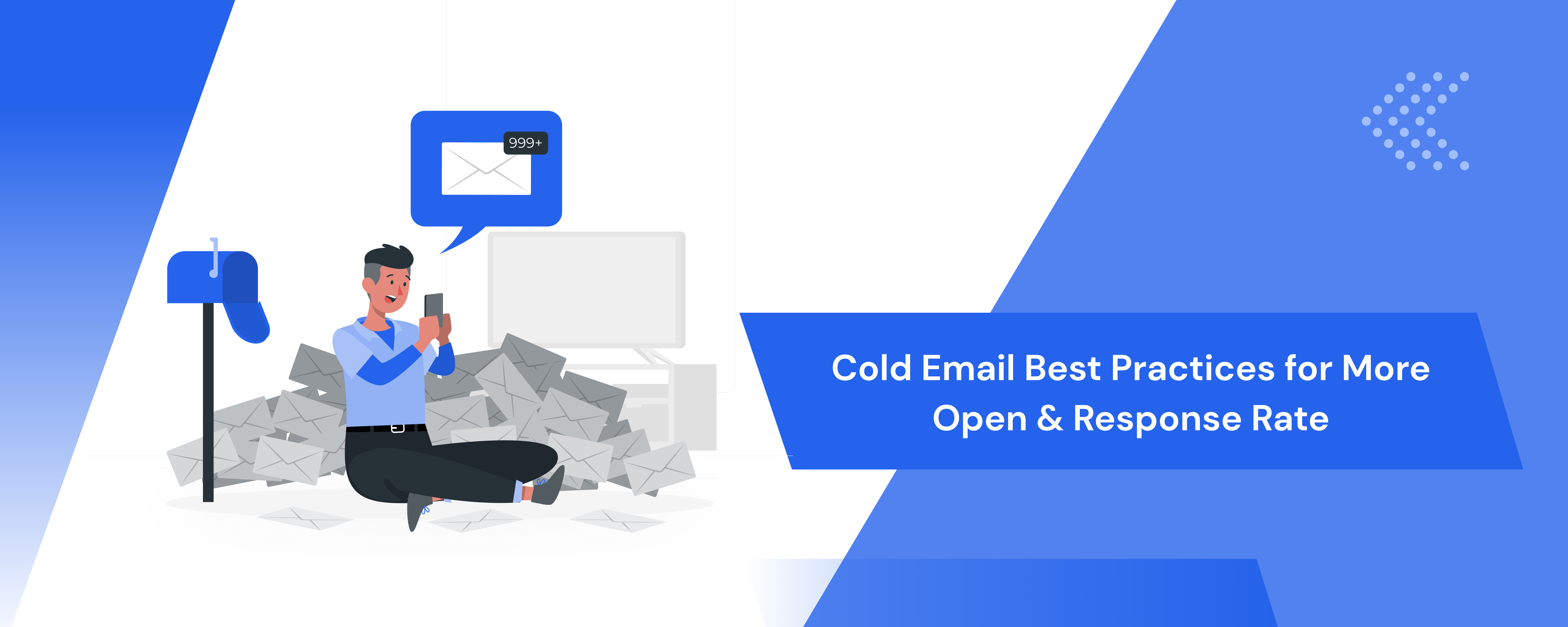Cold emailing is a cost-effective outbound sales approach to build a new customer base for your products and services.
However, it can also be used for marketing cooperation, influencer marketing outreach, hiring, and more.
If done right, cold emailing is an access card that opens the door to potential business opportunities, allowing you to initiate meaningful conversations, build connections, and bag new clients.
In this article, you will get actionable insights to get more open rates and response rates for your cold outreach campaigns with proven cold email best practices.
These cold email best practices are derived from hundreds of our cold email campaigns and insights from fellow entrepreneurs from the different business domains of the B2B industry.
Table of Contents
Quick Bytes of Cold Email Best Practices
A lot has changed since the arrival of cold emails. Here’s the fundamental formula to boost the open and response rate of any cold emailing, regardless of the niche:
Apart from this, there is a lot more to take into consideration during the three stages of your B2B cold email campaigns.
Let’s get into the best practices of each stage of your B2B cold email campaigns: before, during, and after cold email campaigns.
Before Cold Email Campaigns
Selection of the Best Cold Outreach Tools
I should start with the selection of tools since there are a lot has changed in cold prospecting, particularly cold emailing.
A decade ago, you must not heard the terms, such as email warmup, inbox rotation, multi-channel marketing, and liquid formulas.
These are not just novel fancy terms introduced by cold email automation software vendors but a drastic change and the inventions of this new age of cold emailing.
Given that the changes are drastic, you should choose the best cold outreach tool available in the market.
To do that, you should understand the difference between cold emails and marketing emails. Following that, you should know the difference between marketing automation and cold outreach automation tools.
Yes, you cannot use the marketing automation tool for your cold outreach purposes as the marketing automation tools possess some restrictions:
And, limitations in features, such as:
Even the popular email marketing automation tools lack all the features and have stringent restrictions that don’t make it an optimal tool for cold emailing.
Hence, select tools particularly designed for cold outreach purposes for better inbox deliverability.
If you’re considering why you might need separate tools for email marketing and cold outreach tasks, GoZen Growth offers a versatile solution worth exploring.
It stands out as a unique software capable of handling both email marketing and cold emailing tasks seamlessly.
It is the only software that can be used for both email marketing and cold emailing in the market. The 2-in-1 nature of Growth proved to be the cost-effective solution for all your inbound and outbound sales needs.
Equipped with advanced AI technologies and natural language processing (NLP), it is already resonating with businesses like you:

Usage of Personal Email or Company Email
Selecting the right sender email address is another crucial factor in determining your open rate.
Would you open an email that comes from [email protected]?
Almost 98% of people will not open the mail that comes from the above mail address. The other 2% might open with a great amount of hesitation.
For cold email campaigns (as well as marketing email campaigns), using a company email is generally more effective and professional than using a personal email address.
From Line
Like the sender’s email address, the From line of your email also gives the first impression to your prospects.
From line of an email is the representation of the sender that contains the sender’s name. It is an important component of your cold email than you think.
It is one of the components in the email snippet, where your prospect can see your subject line and the first line of your cold email along with your From line.
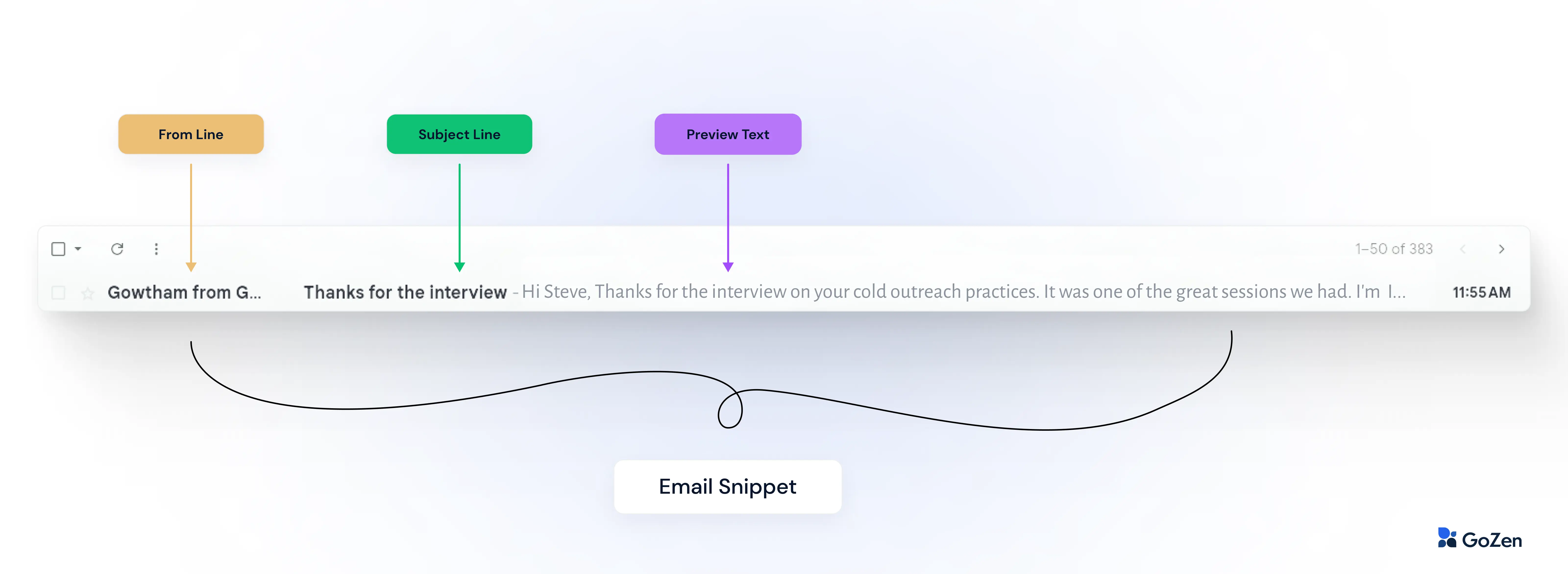
Senders who do not set the correct From line name will display a default From line, which could appear as placeholder text or your email ID.
From Line Best Practices
Generally, a good From line can be just your name or your name along with the company name.
For example, you can set it as:
If your tone is informal throughout your cold email, you can set the From line as “Mike”. If you prefer a formal tone for your cold email, you can set it as “Mike from GoZen”.
Subject Line
The subject line is the main crucial factor that influences the email open rate.
Leaving the email subject lines empty or a vague subject line results in a poor email open rate.
Subject Line Best Practices
Good Subject Lines vs Bad Subject Lines
| Good Subject Line Examples | Bad Subject Line Examples |
|---|---|
| See how XYZ company reduced costs by 20% in 3 months | Guaranteed 100% ROI in 24 Hours! |
| Recommendations based on your content on {{Topic}} | Quick suggestions for you |
| 5 quick [cold email] hacks | [cold email] hacks you never know |
| Solution tailored for {{Prospect’s pain point}} | One size fits all solution! |
| Scale [X] for your {{company name}} | Greetings, {{Name}}! Scale Your Success |
| How to avoid the spam folder | How To Avoid the Spam Folder |
Salutation
Salutation might be a small part of your cold email that the majority of the senders overlook. It turns your prospect into a ‘not-so-interested’ party if you address and greet your prospect with inappropriate terms.
If used correctly, the salutation can be an effective immediate icebreaker.
Salutation Best Practices
The B2B best practices of salutation are personalization and maintaining the balance between too formal and too informal.
Trust me, personalization in cold email is the key to immediately hooking your prospect to read the full email.
Here’s an example of one of our cold email campaigns with an open rate of 40% in which we have implemented first-name personalization.
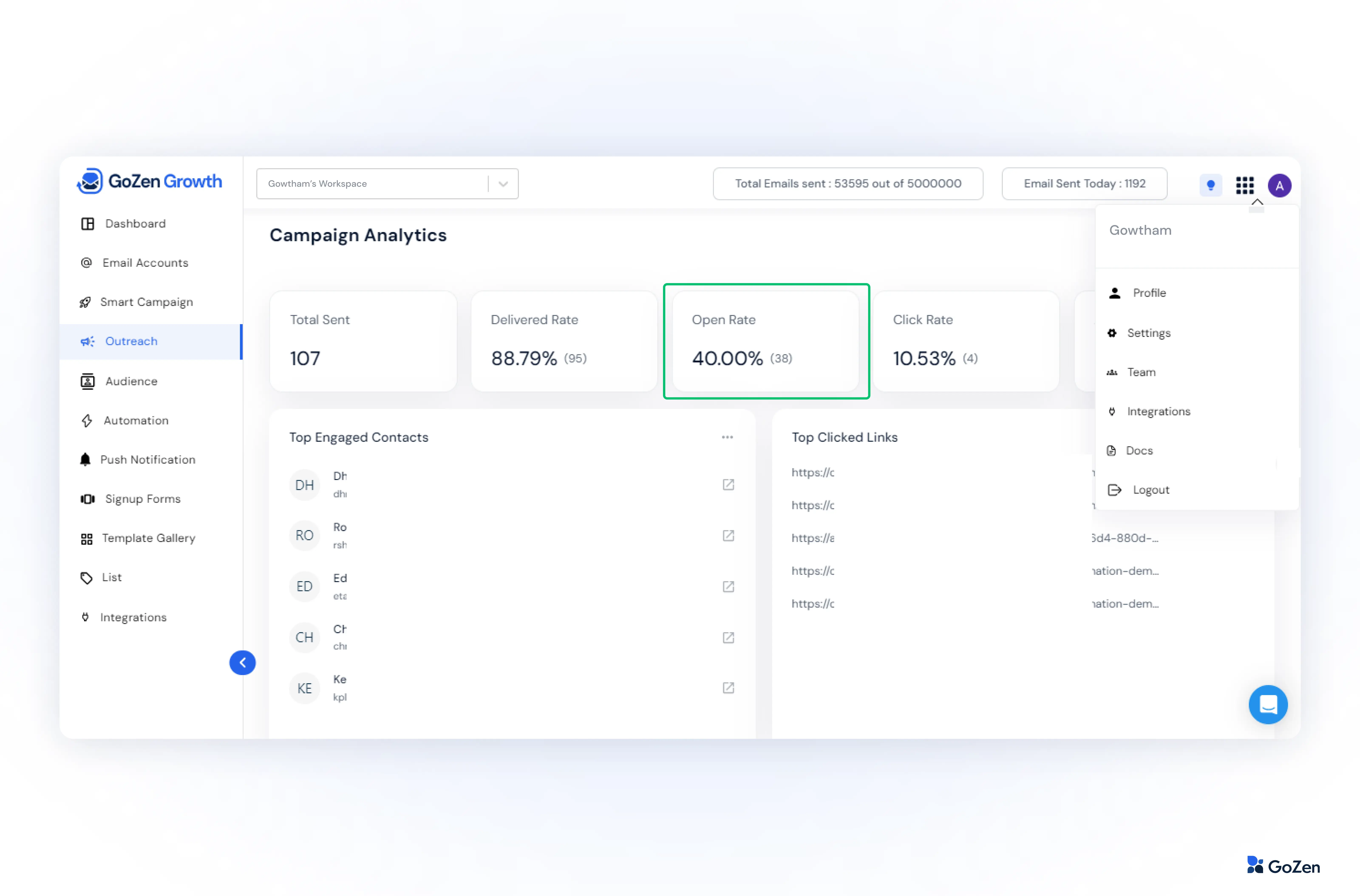
Strictly avoid “Dear Sir/ Mam” in your B2B campaigns.
A good examples of B2B Salutation are:
Dropping the Hey or Hello salutation is a pattern interrupt technique that makes your cold email sound more conversational and authentic.
Cold Email Intro
Once you have got your prospect’s attention with your From line, subject line, and salutation, you need to hook them to keep reading further down with your cold email introduction.
The cold email intro should be about your prospect and their pain points, work, recent achievements, and their company.
Many people start themselves and where they work. But that’s an old technique and that gives your prospects a salesy feel.
Here’s how a cold email shouldn’t be:
“I saw your company on LinkedIn.”
This is one of the worst starts since it is too generic and exhibits a lack of research.
Hence, it will fail to capture your prospect’s interest or motivate them to continue reading. So, the good alternatives of the above-mentioned email intro would be:
Cold Email Introduction Best Practices
Cold Email Body
Following a clear and concise email introduction, it’s crucial to present your value proposition and sales pitch in the email body.
Keep in mind that your value proposition should be as succinct as your introduction, and the sales pitch should adopt a soft-selling tone.
Here’s a good example of a cold email body:
The above email must work and earn a response due to its prospect-first intro, relevancy, social proof element, and conversational tone.
Cold Email Body Best Practices
Cold Email Closing Line
The closing line in your cold email plays a pivotal role in boosting your response rate. Creating an effective email closing line is crucial for building relationships and getting responses to your Call to Action (CTA).
The good email closing line can be:
Hey {{first name}},
Noticed you’ve been hiring recently for copywriters, awesome to see {{companyName}} grow.
Know the struggle of scaling ecommerce, especially if you want to launch a lot of products.
Have you tried Content.AI to reduce your workload & save on employees? If not, you can try it for FREE.
Would love to hear your experience on Content.AI for streamlining your content creation process and optimizing scalability.
{{signature}}
This is one of the good cold email closing lines since it used a lead magnet (the free plan) and an open-ended question which will improve the response rate.
Cold Email Closing Line Best Practices
This is how you can make your cold email closing line impossible to say No.
Cold Email Signatures
Including an email signature is important to show that your cold email is genuine and not automated.
It helps others see who you are, which is key for building trust.
On the flip side, not having a signature or having a weak one can make you seem less trustworthy.
A perfect version of a cold email signature:
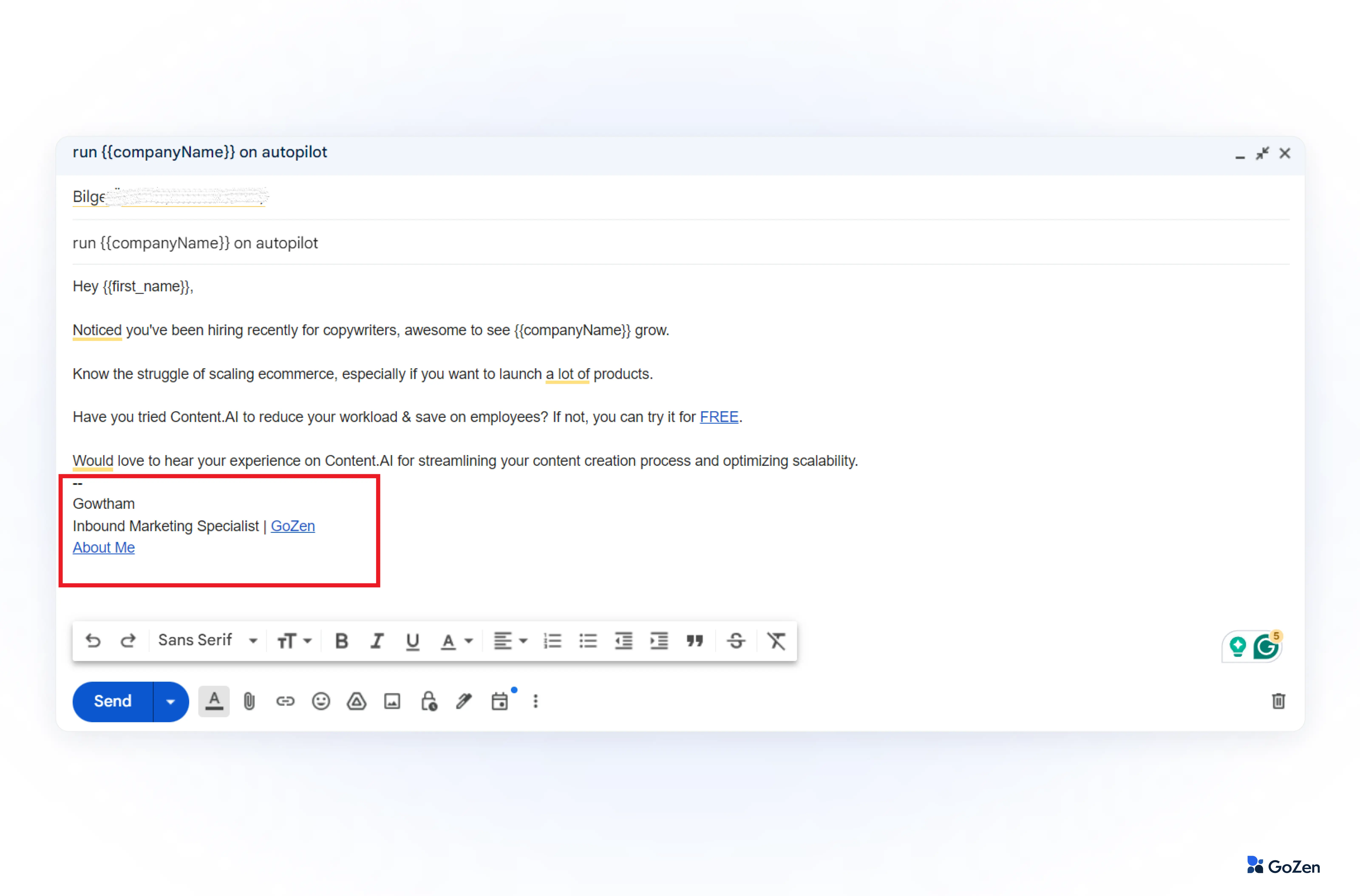
Email Signature Best Practices
As per Canada’s Anti-Spam Legislation (CASL), cold emails must include all sender information, such as name, an active email address, and contact information.
The email signature is an optimal place to include all this information.
Other Common Cold Email Best Practices for Before Cold Campaigns
Add Opt-Out Option
Since cold emailing is all about sending emails to people without their direct consent, you need to adhere to certain rules:
Failing to add the unsubscribe option will lead to spam concerns and incur a hefty fine.
Respect Email Sending Limit
While exploring the best cold outreach software, I discovered that almost all cold email automation tool vendors suggest maintaining a daily email sending limit of 100-250.
Exceeding this limit may put your email at risk of spam. However, GoZen Growth offers mailbox rotation that allows you to send more than 250 emails daily without worrying about spam concerns.
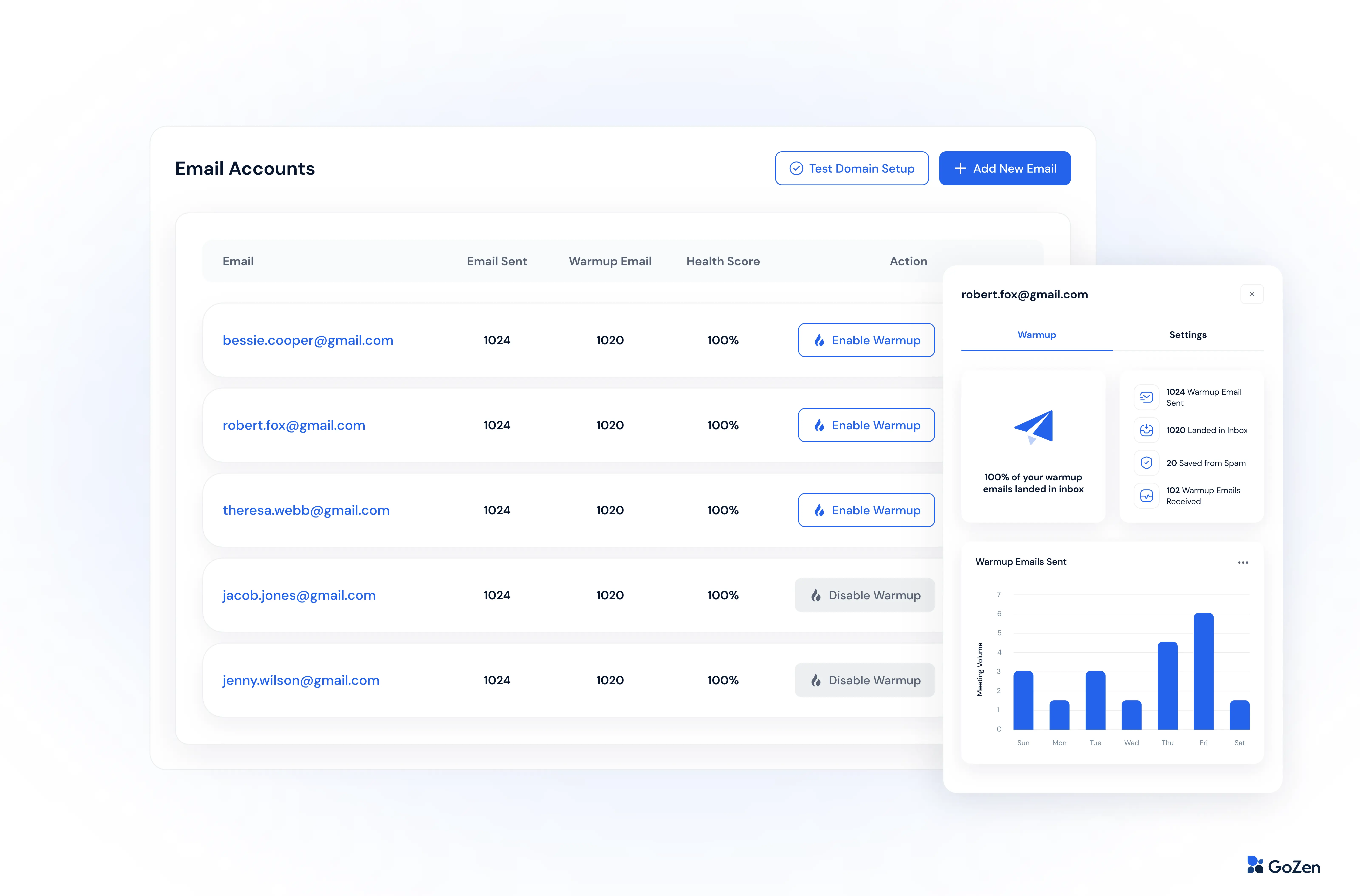
Spam Words Check
The presence of spam words in your cold email will result in landing in the spam folder.
Email providers have spam filters in place that actively monitor all emails for spam trigger words. An example of some spam trigger words include: buy, earn, discount, full refund, etc. Once you have written your cold email, you need to proofread it for the existence of spam words.
Test Email Check
Performing a test email before launching your campaign is a crucial step to ensure that your email looks and functions as intended.
To perform an email test, you need to create a list of active email addresses. The list of email addresses can be your co-marketing professionals or employees at your office.
Just after sending your cold email to the test email list, open it on different devices and email clients to check how it renders. Ensure that the formatting, images, links, and overall layout appear correctly across various platforms (e.g., desktop, mobile, and webmail clients).
Upon finishing your cold email copy, you need to check for the personalization tokens. This is to ensure that you get the desired personalization values.
Sometimes you’ll get a placeholder {{firstname}} instead of the actual value Mike.
Click on all links and download any attachments included in the test email to verify that they work as expected. Make sure that links are directing recipients to the intended landing pages or resources.
Use email testing tools or services to check the spam score of your email. Aim to keep the spam score low to increase deliverability and avoid getting flagged by spam filters.
During Cold Email Campaigns
The best practices for cold email campaigns are not limited to actions taken before launching your campaign. They extend throughout the entire campaign timeline, including during and after the campaign.
List Cleaning
Once you have launched your cold email campaign, you must focus on the responses. People unaware of the “Unsubscribe” option might reply to you expressing their unwillingness to receive your emails.
In those cases, you need to respond at the speed of light. Failing to respond or late response might incur huge penalties for your organization.
You need to act and remove the email addresses from all your campaigns and the follow-up sequences.
Follow-Up Best Practices
Send follow-up emails promptly after the initial contact, preferably within 3-5 business days to maintain momentum.
Avoid overwhelming. Space out follow-ups appropriately to avoid overwhelming recipients with too many emails too quickly.
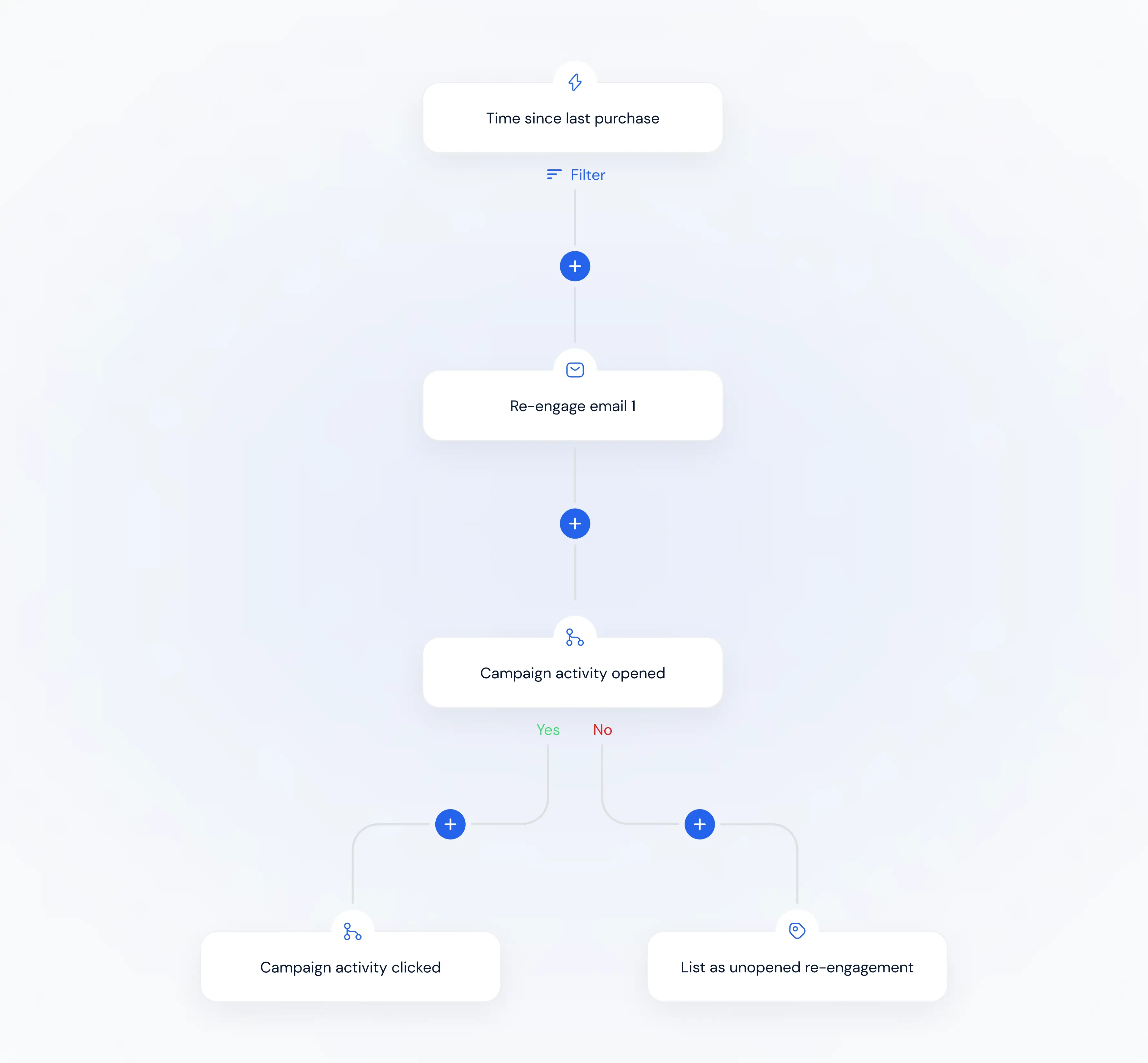
Growth journey builder
Using the journey builder or pre-built templates in Growth, you can effortlessly automate personalized follow-ups based on user behavior.
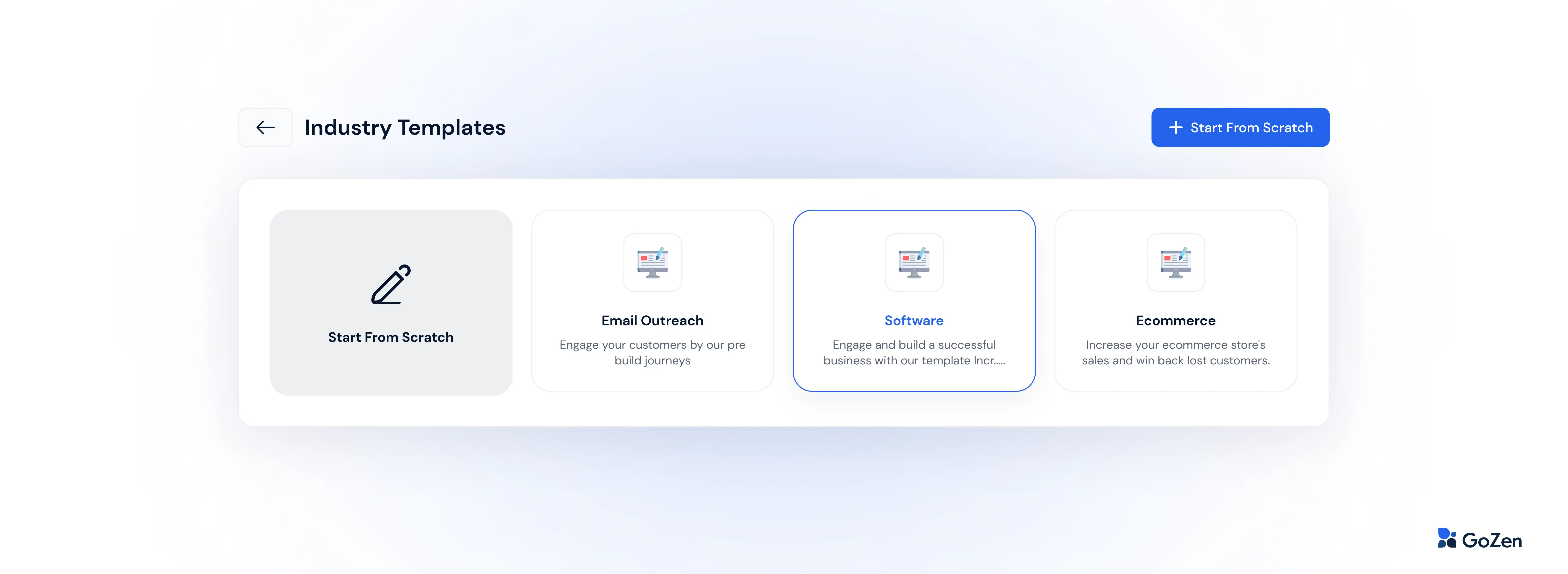
Growth pre-built templates
After Cold Email Campaigns
There are still a few best practices after your initial contact and follow-ups. Let’s explore those.
Track Metrics
A good marketer should review the email marketing metrics often to fine-tune the performance of the cold email campaigns.
Take into consideration of email delivery rates, open rates, and response rates.
Use those insights from campaign analytics of your cold email automation tool to refine future campaigns, incorporating learnings from what worked well and what didn’t.
Collaborate with Salesperson
Once you move your leads and prospects to demo, you must act agile to respond quickly.
Gather the list of prospects who have agreed to the demo and give it to your sales team for further conversation. If you have cold outreach tools that support native CRM support, this list of prospects automatically gets updated there.
Then, you need to equip your sales team with the necessary product and prospect knowledge. What product did the prospects show interest in? What were their pain points? What were their requirements?
FAQs
1. How long a cold email should be?
The ideal length of cold emails should be 120 words or less. However, it can be up to 200 words maximum.
Cold emails should be clear and concise, considering the prospect’s valuable time.
2. Can I use gender-neutral language in cold email campaigns?
In many cases, using gender-neutral language can be inclusive and respectful, especially when you’re unsure of the recipient’s gender identity or if you’re targeting a diverse audience.
However, it’s essential to strike a balance between inclusivity and personalization.
If you are using gender-neutral language, consider personalizing other aspects of your email to make up for the lack of gender-specific language.
This could include referencing the recipient’s job title, industry, recent interactions with your brand, or specific challenges they may be facing.
3. What is an email snippet?
An email snippet is a brief of an email that contains the From line, subject line, and the preview text, the first line of the email.
